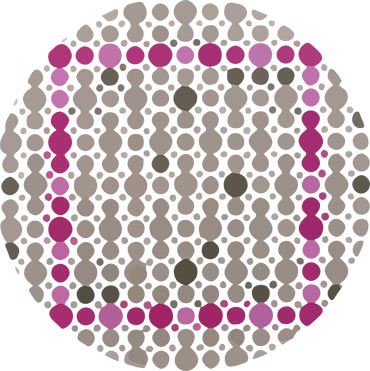
- Test color vision in large groups
- In Minutes
- For less than $1.00 per administration
- With a single sheet of paper
- Under ordinary light conditions
- Works on children or adults
We live in a color-coded world-Our global community increasingly relies on color to communicate. Yet 8% to 10% of all males and .5% of all females are color-blind. In a classroom of 20 children, it's likely that at least 1 will have a problem discerning color.
Fortunately, there's now an easy, inexpensive way to screen for color vision deficiencies. The Neitz Test of Color Vision is a revolutionary new approach to testing for color blindness. Developed at the Eye Institute of the Medical College of Wisconsin, the Neitz Test is accurate, quick, and inexpensive. It identifies the type and severity of color vision deficiency in just a few minutes. It can be used with people of any age, including very young children. And it can be administered in fluorescent light, daylight, or a combination of the two-making it much more convenient than competing instruments. Because it can be given to large groups at a low cost, the Neitz makes routine screening not only possible, but also easy.
Like conventional color vision tests, the Neitz asks individuals to identify colored shapes within grey dot patterns. Unlike these tests, however, it does not require expensive color plates that eventually fade and need to be replaced. Requiring no special training, the test is quite easy to administer.
Elementary school teachers can distribute, administer, and collect the test, in their classrooms, in less than 5 minutes. This means you can screen an entire student body without disrupting lessons or taking a single child out of class. Of course, the same administrative efficiency applies in business and government settings as well.
Reliable, economical, and easy to administer on a large scale, the Neitz Test of Color Vision permits routine screening in schools, industry, public safety agencies, and the military-thereby reducing the likelihood of accident or educational disadvantage due to poor color vision.
More details can be found on the Research to Prevent Blindness website as well.